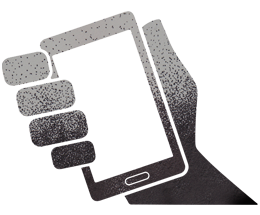TRANSMEDIA TOURISM
According to the definition of academic Henry Jenkins, transmedia storytelling is a communication technique by which a story is related through various media and platforms (a book, a comic book, a post, a spot, a TV series, a film or a videogame). The aim is to create a unified and coordinated entertainment experience and thus get some of the spectators to take an interactive role as they follow the story.
We at Iternatura extend this entertainment experience to the tourist sector, the sector of active spectators, because we think it could be a good fit. Besides, the possibility of designing new spaces for tourists to experience becomes extraordinarily richer using the principles of transmedia narratives.
Using transmedia narratives means creating content that gets an audience involved by using various techniques to soak up their daily leisure time. In the tourist sector, taking the story as the vector of the visit, that content via the various different technologies available allow us to take charge of the entire tourist selling cycle: from the moment the decision is made to promotion, marketing and completion.
The narratives and interactions between the space and the visitor mark satisfaction with the experience, especially in urban and cultural tourism. In fact, we could say that the tourist space is any public space that has narratives to share with its visitors. These spaces have been designed over time, with the technologies available throughout. As such, part of their success lies in the ability to transfer the right narrative messages to the physical space with a purpose: to generate engagement.
The emergence of new technologies, and especially mobile technologies, is reshaping the tourist space and gives us new design options. Augmented reality, combined with IRL (in real life), storytelling, gamification and social networks are all tools for fascinating tourists, just as the obelisks did in the streets of Ancient Rome.
Furthermore, tourists are becoming increasingly demanding, seeking out more customised tourist products and smart services that provide them with individualised high-quality information at any time, in any place and in real time. This is especially true of digital natives, who demand of the tourist space what they see in their devices.
These devices take us from the symbolic to the virtual, from the liturgy to the experience. Not all tourists are the same, nor do all desire the same intensity of information and knowledge. Technology allows us to adapt to each style of visitor by incorporating stories, games, rigour and anecdotes, all based on demand. Therefore, we understand that technology contributes greatly as a tool for designing experience and interactivity. The successful design of new tourist spaces will surely not come from replacing one way of doing things with another, but from co-existence and the mixing of all ways of doing things.

Heritage
The cultural inheritance of a community’s past, maintained and passed down to current and future generations.

Narrative
The art of telling a story. The creation and use of an atmosphere generated by a story.

Gamification
The use of game, thought and mechanical design elements to engage people in different contexts.

Geolocation
The ability to find one’s location and geographic relations with other objects by means of a mobile device.

Mobility
Provides the means for people to use mobile devices and augmented and virtual reality to record information about their activity and integrate the data directly.